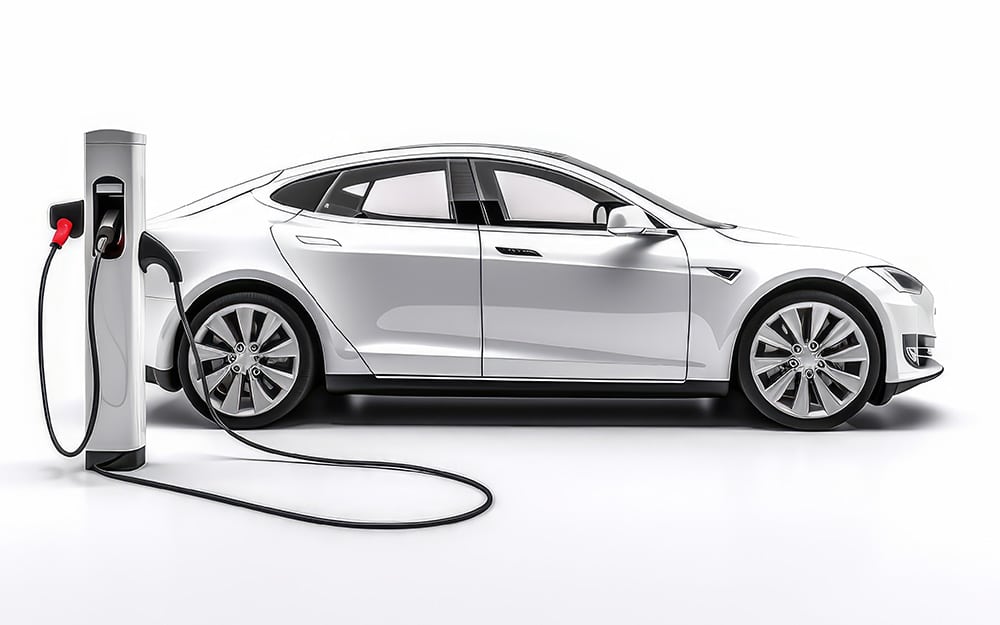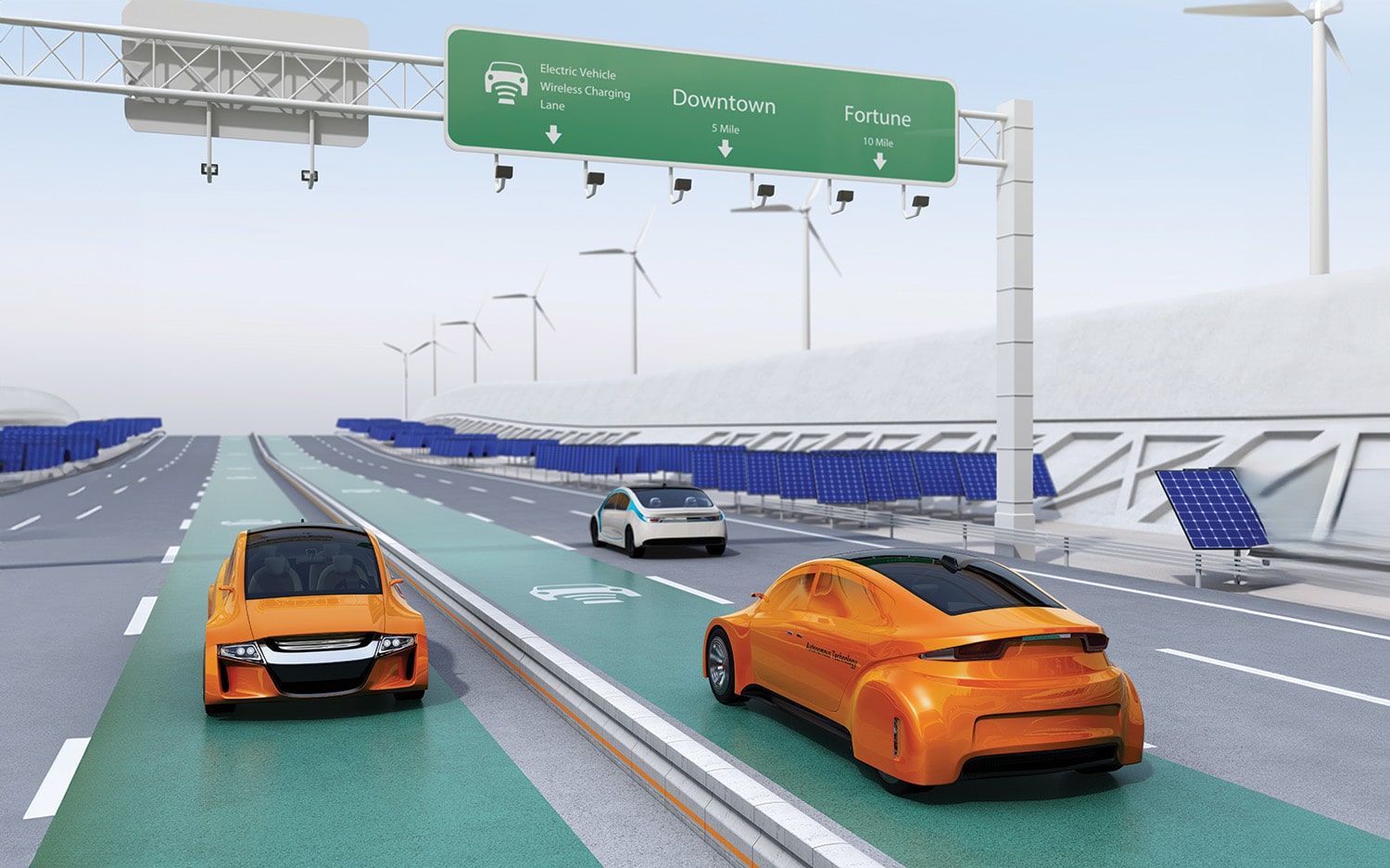
Seven-Generation Decision-Making
A major factor of sustainability is thinking about how we
Share:
Share:
The advent of the EV age is about to make parking management more complex for parking owners as the auto industry becomes electrified. President Biden has called for half of all auto sales to be electric by 2030, and the auto industry is responding with aggressive EV goals. General Motors plans to produce only EVs by 2035 and Ford and Stellantis (formerly Fiat Chrysler) plan to be 40% electric by 2030. Volvo is being even more ambitious, promising to go all-electric by 2030.
This trend promises to significantly impact parking owners of all types. While the bulk of EV charging will take place at home, many drivers will need to juice up when they travel or after they commute to work or play. Parking facilities provide the most obvious source of recharging when drivers need to recharge on the road. Local and national authorities seem to think so too, with some beginning to implement codes mandating EV charging and putting the infrastructure cost on parking owners.
“There’s a lot of pressure coming from outside to add EV charging,” said Rob McConnell, Vice President at WGI Inc. “Some states and municipalities, California for instance, are already setting requirements for offering EV charging in new development. Other states will follow soon, so it may be time to start thinking about how to add EV charging, what types of equipment to offer, and a timeframe for adding the equipment.”

Let’s start with when. If owners are already seeing electric vehicles in their parking facilities, the answer may be “now” or at least “soon.” Many have already begun installing charging stations. But just because the auto industry has begun the conversion to all-electric fleets, that doesn’t mean you need to add EV charging stations to all your parking spaces now. It will be nearly a decade before even the most ambitious automakers plan to be all electric, and a few years later for the others. Plus, drivers won’t all immediately switch over at once; they will continue to drive their gas-powered cars and trucks for a while. Today, the average vehicle on the road is 12 years old—and that trend will continue even after the auto industry completes the conversion to all-electric production. Realistically, it will be another 20 years or so before most drivers be driving electric vehicles. So, owners can stagger their installation of EG charging over several years.
“EV equipment is expensive, and parking owners don’t want to invest valuable capital before it’s necessary,” said David Rich, vice president of the parking consulting firm Rich & Associates. “Plus, as with any new technology, it’s reasonable to assume that the cost will drop significantly as new manufacturers enter the market. Why spend $12,000 per space today when the same technology may cost $1,000 or less in a few years?”
According to Rich, owners should work closely with their planning teams to estimate what demand is going to be over the next 15 to 20 years and how that demand will grow from year to year. Then they can make an informed decision about how many EV units to install each year.
After working out the related issues of when and how many EV units to install, the next essential issue is what type. There are three basic types of charging equipment. Level 1 is more of an entry level charger, and it uses a normal 120-volt connection, like a standard household outlet. It’s the slowest charging option available and tends to be more suited to overnight charging, so these may be the best choice for residential developments. Level one chargers typically cost between $300 and $600 each.
“While this may be a good choice for residential complexes, it may not be the best choice for parking facility owners and stand-alone charging stations,” said John Abraam, principal at Strategic Energy Solutions, Inc. “They may be underpowered when it comes to their parkers’ needs because it takes so long to fully charge a vehicle.”
Level 2, the most common charging station, may be a better choice for most owners. Level 2 is 240-volt technology that can fully charge a vehicle in about three hours. Level 2 stations cost between $2,000 and $13,000 and average out to around $6,000 each. A level 2 station can typically fully charge a vehicle in three to eight hours.
Level 3 charging stations are by far the fastest and most expensive. They operate at 480-volts and can provide an 80% charge in about 30 minutes. The average cost of a fully installed level 3 EV charging station is around $50,000 to $80,000 and they may require a utility company to install new service. For owners considering a level 3 station, it’s a classic cost/benefit question. Owners tend to want to provide the best parking experience possible, but many will find the cost prohibitive.
It’s important to remember that the decision about which level charging to utilize doesn’t revolve around the brands of vehicles that are being charged. Each OEM manufacturer uses the universal level 2 J1772 connection or one of two DC CCS or Chademo connectors (Tesla, perhaps the best-known electric vehicle manufacturer, has its own proprietary connector, but an adapter is included with each Tesla to allow vehicles to charge at all L2 stations). Decisions should be based on cost and how the parking owner wants the charging station to impact the use of parking spaces. If more frequent turnover is desired, levels 2 or 3 may be suitable; if long-term or overnight charging will be the norm, level 1 may suffice.
The EV units are the most visible element of the charging stations, but the installation doesn’t end there. Infrastructure is required to bring electricity to the units. EV charging requires power supplied by a local utility; wiring to convey that power; conduit to house the wires; and of course, the charging stations. Developers and owners should consult their parking consultants or EV specialists to make sure they have a handle on this infrastructure and how it will impact their EV charging plans.
Another thing to consider is whether to invest in networked EV charging stations. These Wi-Fi-connected stations limit access to specific users (like residents of an apartment building), charge users for electricity consumption, monitor the station’s performance, and provide usage reports. Networked stations cost more than non-networked ones, but they may be worth it because they are easier to manage. Some EV providers offer user-friendly turnkey solutions and will bundle everything together, making the technology more manageable.
“Some providers will help put in new conduits, power lines, and EV charging systems and set everything up,” said Chris McKenty, VP of Sales and Marketing at SKIDATA. “The EV technology can even be integrated into the facilities PARCS system to allow the parker to pay for the EV charging as part of the parking transaction.”
Weight is another consideration. EV batteries are heavy and electric vehicles can weigh considerably more than traditional vehicles that run on gasoline. For instance, the EV version of the GMC Hummer has several batteries for extended range and expanded power and weighs more than 9,000 pounds. This is about three times the weight of a Toyota Corolla. This may be a consideration for multi-story parking garages.
“You’d have to look at your entire parking structure with a building engineer,” said McKenty. “Can the garage handle it if you have all these heavy electric vehicles parked on the top floor? You could be adding an extra 60,000 pounds onto the weight of that floor deck.”
It won’t be long before electric vehicles are the rule, rather than the exception. When that time arrives—and it will be sooner than most people realize—developers and owners will need to have adequate EV charging resources to meet the needs of their parkers. It’s time to start ramping up to meet that need.

A major factor of sustainability is thinking about how we

Preliminary Results

Are We Ready for Wireless Charging Roads?
Parking & Mobility is IPMI’s flagship publication, covering the news, trends, analysis, technologies, and people of the parking and mobility industry, and how it affects and influences communities around the world.
| Cookie | Duration | Description |
|---|---|---|
| cookielawinfo-checkbox-advertisement | 1 year | Set by the GDPR Cookie Consent plugin, this cookie is used to record the user consent for the cookies in the "Advertisement" category . |
| cookielawinfo-checkbox-analytics | 11 months | This cookie is set by GDPR Cookie Consent plugin. The cookie is used to store the user consent for the cookies in the category "Analytics". |
| cookielawinfo-checkbox-functional | 11 months | The cookie is set by GDPR cookie consent to record the user consent for the cookies in the category "Functional". |
| cookielawinfo-checkbox-necessary | 11 months | This cookie is set by GDPR Cookie Consent plugin. The cookies is used to store the user consent for the cookies in the category "Necessary". |
| cookielawinfo-checkbox-others | 11 months | This cookie is set by GDPR Cookie Consent plugin. The cookie is used to store the user consent for the cookies in the category "Other. |
| cookielawinfo-checkbox-performance | 11 months | This cookie is set by GDPR Cookie Consent plugin. The cookie is used to store the user consent for the cookies in the category "Performance". |
| CookieLawInfoConsent | 1 year | Records the default button state of the corresponding category & the status of CCPA. It works only in coordination with the primary cookie. |
| elementor | never | This cookie is used by the website's WordPress theme. It allows the website owner to implement or change the website's content in real-time. |
| viewed_cookie_policy | 11 months | The cookie is set by the GDPR Cookie Consent plugin and is used to store whether or not user has consented to the use of cookies. It does not store any personal data. |
| Cookie | Duration | Description |
|---|---|---|
| _ga | 2 years | The _ga cookie, installed by Google Analytics, calculates visitor, session and campaign data and also keeps track of site usage for the site's analytics report. The cookie stores information anonymously and assigns a randomly generated number to recognize unique visitors. |
| _ga_02PMHW8YWC | 2 years | This cookie is installed by Google Analytics. |
| _ga_LC0QJJHM3J | 2 years | This cookie is installed by Google Analytics. |
| _ga_V9KYTSBYT2 | 2 years | This cookie is installed by Google Analytics. |
| iutk | 5 months 27 days | This cookie is used by Issuu analytic system to gather information regarding visitor activity on Issuu products. |
| Cookie | Duration | Description |
|---|---|---|
| mc | 1 year 1 month | Quantserve sets the mc cookie to anonymously track user behaviour on the website. |
| Cookie | Duration | Description |
|---|---|---|
| ultp_view_1052 | 1 day | No description |
| ultp_view_1058 | 1 day | No description |
| ultp_view_1060 | 1 day | No description |
| ultp_view_1064 | 1 day | No description |
| ultp_view_1068 | 1 day | No description |
| ultp_view_1070 | 1 day | No description |
| ultp_view_1072 | 1 day | No description |
| ultp_view_1078 | 1 day | No description |
| ultp_view_1082 | 1 day | No description |
| ultp_view_1088 | 1 day | No description |
| ultp_view_1100 | 1 day | No description |
| ultp_view_1103 | 1 day | No description |
| ultp_view_1114 | 1 day | No description |
| ultp_view_1118 | 1 day | No description |
| ultp_view_1122 | 1 day | No description |
| ultp_view_1125 | 1 day | No description |
| ultp_view_1130 | 1 day | No description |
| ultp_view_1132 | 1 day | No description |
| ultp_view_1135 | 1 day | No description |
| ultp_view_1541 | 1 day | No description |
| ultp_view_1554 | 1 day | No description |
| ultp_view_1557 | 1 day | No description |
| ultp_view_1560 | 1 day | No description |
| ultp_view_1563 | 1 day | No description |
| ultp_view_1568 | 1 day | No description |
| ultp_view_1572 | 1 day | No description |
| ultp_view_1576 | 1 day | No description |
| ultp_view_1580 | 1 day | No description |
| ultp_view_2305 | 1 day | No description |
| ultp_view_2321 | 1 day | No description |
| ultp_view_2338 | 1 day | No description |
| ultp_view_2342 | 1 day | No description |
| ultp_view_259 | 1 day | No description |
| ultp_view_270 | 1 day | No description |
| ultp_view_275 | 1 day | No description |
| ultp_view_286 | 1 day | No description |
| ultp_view_3074 | 1 day | No description |
| ultp_view_3115 | 1 day | No description |
| ultp_view_3334 | 1 day | No description |
| ultp_view_3336 | 1 day | No description |
| ultp_view_3338 | 1 day | No description |
| ultp_view_3340 | 1 day | No description |
| ultp_view_3346 | 1 day | No description |
| ultp_view_3354 | 1 day | No description |
| ultp_view_3361 | 1 day | No description |
| ultp_view_3367 | 1 day | No description |
| ultp_view_365 | 1 day | No description |
| ultp_view_367 | 1 day | No description |
| ultp_view_38 | 1 day | No description |
| ultp_view_3846 | 1 day | No description |